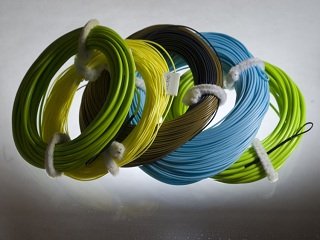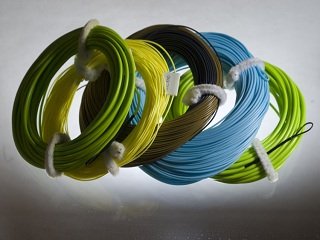 Fly fishing can be pretty overwhelming to those new to it. Walk into a fly shop and you’ll see hundreds of flies, some of which only differ by hook size, vises, fly-making materials of every style, and boxes of line along the wall. The line you choose for your next fly fishing trip plays a very important role. Flies weigh next to nothing, so what you’re really casting when fly fishing is the line, which is why there are different weights available. Today I’ve come up with a basic guide to choosing fly line that I hope will help you out the next time you find yourself staring at a collection of fly line.
Fly fishing can be pretty overwhelming to those new to it. Walk into a fly shop and you’ll see hundreds of flies, some of which only differ by hook size, vises, fly-making materials of every style, and boxes of line along the wall. The line you choose for your next fly fishing trip plays a very important role. Flies weigh next to nothing, so what you’re really casting when fly fishing is the line, which is why there are different weights available. Today I’ve come up with a basic guide to choosing fly line that I hope will help you out the next time you find yourself staring at a collection of fly line.
There are two basic factors that play into the fly line you’ll need: your fly rod and the species you’ll be targeting primarily. Fly rods tend to have a designated line weight, which will vary based upon the size and potentially the use the rod was designed for. Also, the species you are going for will dictate the weight of the line. The designated line weight of each rod can be found just above the grip and matching this line weight to the rod will allow your outfit to be more balanced. If your rod is rated for two weights (it may read 5/6, for instance), then I suggest going with the heavier of the two.
Fly line usually consists of a core and a coating. The core conventionally is comprised of a braided nylon and the coating usually is a polymer that gives the line its weight. Of course, there are variations on the materials used, depending on the brand.
While fresh and saltwater line made for spinning and baitcast reels is known for its variety based on tensile strength, fly line differs by its weight. What that means is the physical weight of the first ten or so yards of the line itself, which is the main length that you’ll be casting. That length’s standard weight is measured in “grains,” and falls within what’s called a “grain window.” For instance, a 4-weight fly line weighs in at a standard weight of 120 grains and falls within a window of about 114-126 grains. A 15-weight line has a standard weight of 550 grains and falls within a window of 535-565 grains. Heavier fly lines will be able to cast longer and throw heavier flies.
Any fly shop will have a chart or pamphlet available that gives a complete breakdown of the weights of each fly line, which will better enable you to match each line to your fly rod. Also, fly shops are usually staffed by professional fishermen who know a thing or two about it, so don’t hesitate to ask questions. That does it for Part One of my guide on choosing fly line. Come back for Part Two, where I’ll delve into the more intricate factors that play into fly line options, such as taper and sink rates.








